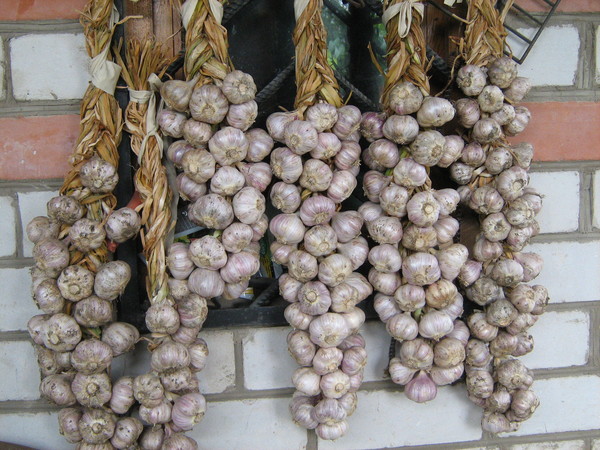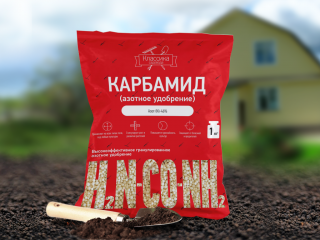Content
Feeding garlic is an important process for growing a good, high-quality crop. Fertilizers are applied throughout the entire growth period, in approximately 3 stages. For this purpose, mineral and organic fertilizers are used, as well as folk remedies.

To increase your garlic yield, you need to fertilize it properly.
Rules for treating garlic with fertilizers
Any plant needs feeding, and throughout the entire growth period. Planting winter garlic is not an easy task, since it is important to calculate the timing correctly. If you plant it ahead of time, it will germinate and the sprouts will die in winter, but if you do it too late, the seedlings will freeze before they take root.
Winter garlic needs neutral acidic soil, so it will need fertilizers after wintering in early spring; they consist of phosphorus and potassium. In this case, on the eve of planting, about 2 weeks in advance, the soil is mixed with humus and potassium phosphate, and wood ash can be added.
The spring species is also fertilized, starting from the moment of planting in loose soil.Later, it needs to be fed when the first leaves appear, and the garlic needs to be fertilized for the third time in early June.
When and how often to fertilize
Fertilizing winter garlic is carried out in three stages. The first time they do this is on warm days. The procedure is necessary to maintain growth, as well as good greening, to avoid the garlic having white tips in June. The second time the composition is applied after 2 weeks. The third time you should feed winter garlic is in June.
Spring garlic is fertilized with the formation of the first leaves. A second procedure is required after two weeks. The third feeding of summer garlic is carried out in June, and always on the developing head. If you do this earlier, the fruits will be frail, all the growth will go into the arrows and green parts of the plant.
How to feed winter garlic in May and early June
Garlic should be fed in May-June at the third stage of fertilization. At the end of spring, beginning of summer, the formation of the bulb begins. This stage is called the phosphorus stage, its essence is to make the cloves grow larger. They offer three main meal options:
- Feeding garlic with ash in June. 200 g of ash are mixed with 10 liters of water, add 1.5 tbsp. l. superphosphate. 5 liters of mixture are required per 1 m2.
- The second option for processing garlic in June includes 2 tbsp. l. superphosphate in 10 liters of water. Consumption per 1 m2 of crop is 4-5 liters.
- The third option excludes chemicals; you need to dilute 1 glass of ash per 10 liters of water, consumption - 2 liters per 1 m2 of crop.

Fertilizing is introduced starting from the onset of the growing season
Mineral fertilizers
Among the mineral fertilizers, the following are distinguished:
- Urea. Recommended for spring feeding due to its high nitrogen content. 1 tbsp. l. urea is dissolved in 10 liters of water, the fertilizer consumption per 1 m2 of crop is 3 liters.
- Ammonium nitrate. It is also a nitrogen-containing fertilizer, suitable for spring feeding (every 3 weeks). Dilute in a ratio of 15 mg of the substance per 10 liters of water, the fertilizer consumption per 1 m2 of crop is 3 liters.
- Nitroammofoska. Consists of potassium, phosphorus, nitrogen, sulfur. It is used for two types of feeding - foliar and basal. For non-root, mix 1 tbsp. l. fertilizers in 10 liters of water, for root use 2 tbsp. l.
- Superphosphate containing phosphorus. Positively affects the quality of the bulb and increases shelf life. The mixture is prepared from 2 tbsp. l. fertilizers per 10 liters of water. 5 liters of solution are consumed per 1 m2 of soil.
Organic fertilizers
Ash is one of the main organic fertilizers useful for processing garlic. It feeds the plant with potassium and phosphorus. Ash is used in two ways:
- Just scatter over the beds.
- Make an infusion - dilute 0.5 liters of ash in 10 liters of water. Before applying fertilizer at the root, leave it for a day.
Organic fertilizers include yeast containing amino acids. The mixture consists of 200 g of raw yeast placed in 1 liter of water. The solution is infused for a day, then another 9 liters of water are added. This is used to water the garlic.
Use ammonia in an amount of 25 ml per 10 liters of water. The mixture is rich in nitrogen, but only feathers are treated with it. The solution is also suitable for watering, but it is used to treat the soil immediately before sowing the plant.
Folk remedies
Herbal infusion is one of the folk remedies for fertilizer. The herb is high in nitrogen and easy to cook. Green weeds are crushed and filled with water. The mixture is stirred regularly for 2 weeks, as a result it should turn out transparent. The solution is used during the growing season, so 1 liter of the mixture is diluted in a bucket of water.
Yeast mixed with bread or sugar is also considered a folk remedy. The package of the substance is stirred in 10 liters of water, 400 g of bread or sugar is added. Only fresh mixture can be used.

It is worth paying attention to the level of soil moisture so as not to overwater the beds
How to feed spring garlic in June
Spring garlic has a controversial reputation. On the one hand, the risk of freezing is eliminated, on the other hand, gardeners claim that there is more hassle with it.
To ensure a healthy harvest, spring garlic needs to be fed on the head in June, since the formation of the bulb is already beginning. For this, phosphorus fertilizing and potassium fertilizers are used so that the bulb develops fully and the harvest is of high quality.
You can use mineral products that contain these elements. Superphosphate is introduced - for this, 100 g of granular fertilizer is poured into 1 liter of hot water and left for about 3 hours, stirring. Before use, the mixture is filtered, 150 ml of the solution is diluted in 10 liters of water and applied to the root. 5 liters of fertilizer water 1 m2 of soil.
Phosphorus and potassium fertilizers can be replaced with ordinary ash, for which 1 glass is poured with 3 liters of hot water, mixed and left for a day. Strain the solution and add water so that the total amount of the mixture is 10 liters. Watering should be done in the grooves around the bed.
Garlic care in July
Winter garlic is supposedly harvested at the end of summer, in July-August, spring garlic - in August-September. The main signs of ripening garlic:
- the lower leaves of the stem (possibly the stem) turn yellow and dry out;
- straight green arrows and open inflorescences;
- Garlic without shoots has a dried out root collar;
- the husk is dry, purple-white (checked on separately dug samples);
- The slices are formed, separate easily, but do not crumble.
Remove the garlic carefully, without damaging the heads; do not pull it out, but dig it out. Then they dry it outside in the shade with the onion facing down.

Can be stored in the basement, hanging in “braids”
Conclusion
Fertilizing garlic is intended to improve the quality of the crop. It is carried out on average three times during growth, using fertilizers rich in nitrogen, potassium and phosphorus. You can mix them yourself using organic material, or you can buy ready-made mineral compositions. In general, the feeding process is simple and, most importantly, effective.








